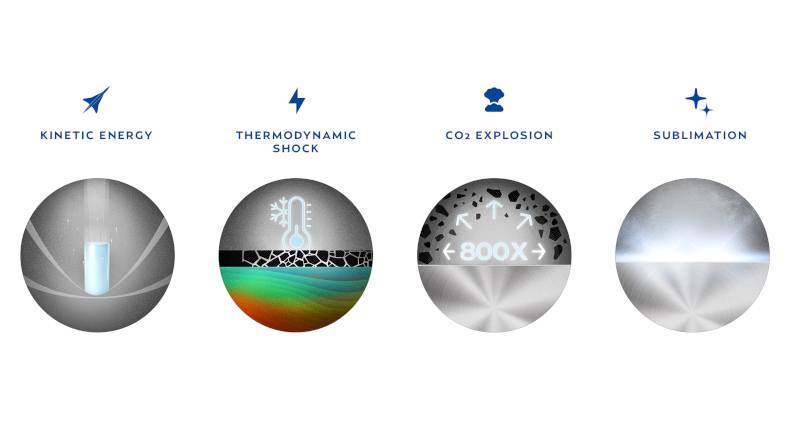Mould and die cleaning
Cold Jet – hall B3 booth 3110
Cold Jet, a global leader in the development of dry ice cleaning solutions and production equipment, will present surface preparation and cleaning solutions.
Utilising dry ice in several applications in plastics processing is helping the industry move into a circular economy to better protect the environment, states the company and explains: The CO2 utilised for the production of dry ice is a carbon capture and utilisation process that involves using recycled CO2, and replaces environmentally harmful solvent cleaning processes.
Mould cleaning remains a critical component of producing quality products. Cleaning mould cavities and vents of resin off-gasses, cured material or mould release agents can prevent numerous common moulding problems such as short shots, burns, flash, contamination, etc. Cleaning is often delayed because traditional methods cause extended downtime and often involve the use of chemicals or mechanical means that are harmful to employees, abrasive to the tooling and can wear away critical mould tolerances.
Cold Jet’s Dry Ice Environmental Cleaning and Surface Preparation (ECaSP) systems are claimed to enable manufacturers to clean moulds more often, faster, cheaper and non-abrasively, in a sustainable manner.
Dry ice is also utilised in the industry to deburr and deflash plastic parts. Thermoset parts will always have flash (sometimes thermoplastic parts as well), and the part geometries do not always lend themselves to tumbling. Cold Jet’s solutions are often completely automated.
Lastly, Cold Jet offers solutions with on-demand dry ice production and blasting for the surface preparation/cleaning of plastic parts prior to painting. Cold Jet systems are designed for easy integration into existing automated paint line systems. They are aimed to replace aqueous cleaning methods and the associated problems that come with wet cleaning.

